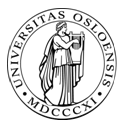|
Home
LaMDa News
Research projects
Group members
Publications
Talks/Posters
Public communications/Media
MLST/AFLP/MLEE databases
Jobs
Collaborations
Funding
Contact information
|
Bacillus project: Background & Achievements
Framework
B. cereus is a Gram−positive endospore−forming rod−shaped bacterium that is a major cause of food−borne infections due to its production of an emetic toxin or one or more enterotoxins. In addition it is an opportunistic pathogen particularly associated with nosocomial and serious eye infections. It is closely related to the highly pathogenic B. anthracis, the etiological agent of anthrax in mammals including man (16S rRNA sequences are for some strains identical), and to the insecticidal biocontrol agent B. thuringiensis. The toxin genes conferring the species−specific pathogenicity profiles of B. thuringiensis and B. anthracis are largely plasmid borne. The three species thus share a common chromosomal genetic background. In our research group we have for the last decade been studying the genetic relationship between these closely related bacteria, as well as different factors involved in pathogenicity.
Background
B. cereus and B. thuringiensis are common bacteria of the environment, that form spores when the supply of nutrients is limited. The spores are dormant cells in which the genome is well protected against external destructive agents like heat, drying, UV irradiation, and chemicals, and they may remain dormant for very long time periods (decades, possibly longer). For this reason, sporulating bacteria are able to survive conditions that would normally kill other bacteria. When environmental conditions improve, the spores may germinate and initiate vegetative growth.
B. cereus is an opportunistic pathogen capable of causing several types of infections in man. Many strains produce enterotoxins or an emetic toxin that may cause gastroenteritis, diarrhoea, and vomiting, and in Norway B. cereus is currently the prime cause of bacterial food poisoning. B. cereus is also a frequent polluter organism in dairies (and thus in milk products), due to toxin synthesis, as well as formation of heat−resistant spores which survive pasteurization. It is also an opportunistic contaminant in hospitals and is involved in several types of nosocomial infections. Furthermore, B. cereus is considered one of the most severe organisms to affect the eye (most often after trauma), in a number of cases resulting in blindness in the affected individual.
The only main feature differentiating B. cereus from B. thuringiensis is that the latter produces intracellular insecticidal protein crystals (δ−endotoxins) during sporulation, which are toxic to insect larvae (Lepidoptera, Coleoptera, and Diptera). For this reason, B. thuringiensis is used commercially as a biopesticide, and mixtures of insecticidal crystals and spores are sprayed in large amounts over crop fields in many parts of the world. The bacterium is also used to combat insects that are vectors for diseases such as malaria or yellow fever. This organism is therefore of high economic potential for the agricultural industry, and more than 200 B. thuringiensis−related products were registered in the United States by 1998. Although B. thuringiensis is not generally regarded as a polluter today, this bacterium appears in many cases to produce the same virulence factors as B. cereus.
B. anthracis has traditionally been identified as a non−haemolytic, non−motile, penicillin−sensitive, encapsulated bacterium causing the lethal disease anthrax. The organism is endemic or hyper−endemic in Africa, Asia, and South America, and anthrax−like infections have been described in ancient literature dating back more than 2000 years. The bacterium has also been considered a potential weapon in biological warfare, and was used as a bioterror agent in the anthrax letter attacks in the US during the fall of 2001. The genes causing the lethal effects of anthrax are located on two large virulence plasmids, pXO1 encoding the three anthrax toxin subunits, and pXO2 encoding the poly−D−glutamate capsule. Similarly, the genes encoding entomopathogenic proteins in B. thuringiensis are most frequently located extrachromosomally on plasmids. The phenotypic traits employed for the identification of B. anthracis and B. thuringiensis may thus be lost, making them indistinguishable from strains of B. cereus. Strains of B. anthracis in which one of the virulence plasmids are lost have been isolated during epidemiological investigations and characterised as B. cereus. Similarly, when B. cereus strains receiving plasmids encoding crystal toxin or capsule formation, they are transformed into Cry+ and Cap+ variants that would be identified as B. thuringiensis and B. anthracis, respectively.
Achievements
Our research group has for the last two decades been studying the genetic relationship between the B. cereus group bacteria, as well as different factors involved in pathogenicity.
Major achievements include:
- Construction of the first physical map of a Bacillus species, B. cereus ATCC 10987 (J. Bacteriol. 172: 3821-25: 1990).
- Complete physical maps of 5 B. cereus and 5 B. thuringiensis strains reveals variable degree of conservation in different regions of the genome, variable numbers of rRNA operons in different B. cereus strains, the presence of putatively diarrheogenic B. cereus enterotoxin genes in the biopesticide B. thuringiensis, and that genome organization does not form a foundation for separating the two bacteria (one human pathogen, the other employed widely as a biological pesticide) into separate species (J. Bacteriol. 174: 3750-6: 1992, J. Bacteriol. 175: 1053-60: 1993, Mol. Microbiol. 13: 161-9: 1994, FEMS Microbiol. Lett. 136: 325-8: 1996, FEMS Microbiol. Lett. 141: 163-7, Curr. Microbiol. 37: 245-50: 1998, Curr. Microbiol. 44: 81-7: 2002).
- Genomic fingerprinting and MultiLocus Enzyme Electrophoresis (MLEE) analysis of more than 200 B. cereus group strains shows that the genetic diversity of the group is high, but that B. cereus and B. thuringiensis should be considered the same species, as the two bacteria are phylogenetically intermixed (Appl. Environ. Microbiol. 60: 1719-25: 1994, Curr. Microbiol. 37: 80-7: 1998, J. Clin. Microbiol. 38: 1615-22: 2000).
- Comparative analysis of piecemeal DNA sequences (117 kb) from two B. cereus genomes shows that genome organization is highly different from the model organism Bacillus subtilis (Microbiology 145: 621-31: 1999).
- Comparative genomic and functional analysis of the transcriptional regulator PlcR reveals a global regulon of extracellular virulence factors in B. cereus and B. thuringiensis, while the highly toxic human and animal pathogen B. anthracis has acquired a mutation in the PlcR regulator, abolishing its function (collaboration with Institut Pasteur, France) (Mol. Microbiol. 32: 1043-53: 1999, Microbiology 145: 3129-38: 1999, Microbiology 145: 3139-46, Proteomics 2: 784-91, 2002).
- Discovery of a novel, B. cereus group-specific, DNA repeat element bcr1, further characterized as a possible mobile genetic element creating a target-site duplication upon insertion (Microbiology 145: 621-631: 1999, J. Bacteriol. 186: 7714-25: 2004).
- Collaborative partner with The Institute for Genomic Research (TIGR), USA, in the sequencing and comparative genome analysis of the first complete genome of a B. cereus group strain, B. anthracis Ames (Nature 423: 81-86: 2003), and the genome of B. cereus ATCC 10987 containing a large plasmid similar to the B. anthracis virulence plasmid pXO1 (Nucl. Acids Res. 32: 977-988: 2004).
- Design and application of the first MultiLocus Sequence Typing (MLST) scheme for phylogenetic analysis of B. cereus group bacteria (Appl. Environ. Microbiol. 70: 191-201: 2004), leading to the identification of several clonal lineages comprising strains isolated from clinical sources. The first report of a substance with antimicrobial activity from the B. cereus type strain, ATCC 14579, which has an inhibitory effect on several clinically relevant species (J. Appl. Microbiol. 96: 648-55: 2004).
- Identification and functional characterization of unusual bacterial group II introns (mobile RNA elements; J. Bacteriol. 187: 5437-51: 2005) as well as group I IStrons (composite mobile elements consisting of a group I intron and an insertion sequence (IS) element; J. Appl. Microbiol. 101: 579-93: 2006).
- Establishment and application of DNA microarray technology, for analyzing expression patterns of virulence genes in wild-type and mutant B. cereus group strains under normal growth conditions, and during in vitro infection assays using human cell cultures (in preparation).
- Furthermore, published 20 additional papers on the basic biology of B. cereus, B. thuringiensis, and B. anthracis in various microbiology and molecular biology journals during the period 1990-2006.
For a full publication list, presentations, public and media communication, please see other links from the left−hand toolbar.
|



